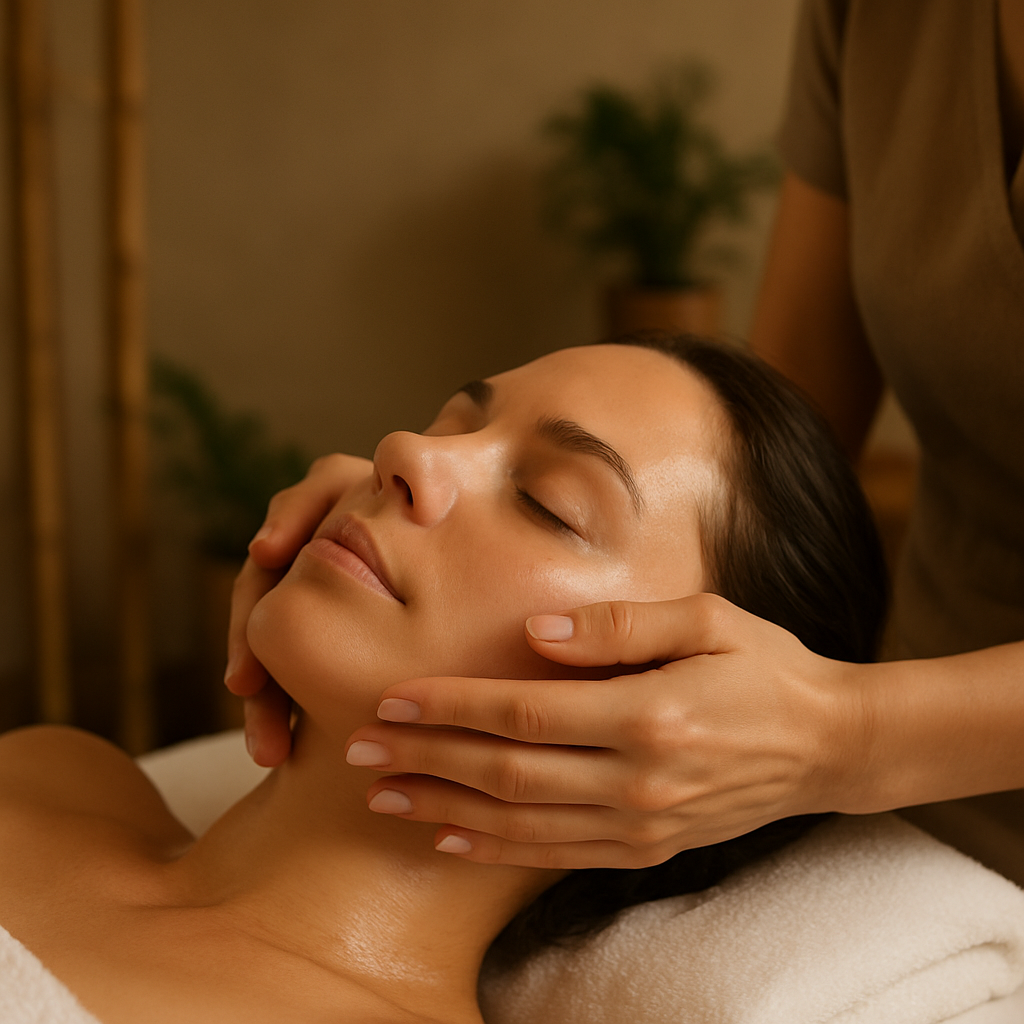The Science Behind Facial Massage and Its Benefits for Skin Rejuvenation

Facial massage has been practiced for centuries across various cultures, from traditional Chinese medicine to Ayurvedic practices in India. Modern science now confirms what practitioners have long believed that regular facial massage offers significant benefits for skin health and appearance. Beyond being simply relaxing, facial massage techniques can stimulate blood circulation, reduce muscle tension, and potentially slow signs of aging when performed correctly.
The practice has gained renewed attention as people seek natural alternatives to invasive cosmetic procedures. Unlike temporary solutions that merely mask skin issues, facial massage addresses underlying physiological processes that contribute to skin health. This hands-on approach works with your body’s natural mechanisms to revitalize skin from within.
Many people wonder whether simple massage techniques can truly impact skin appearance. The answer lies in understanding the biological mechanisms at work beneath the skin’s surface during massage therapy.
The Physiological Effects of Facial Massage
At its core, facial massage works by manipulating the skin, muscles, and connective tissues of the face. When pressure is applied to facial tissues, several physiological responses occur simultaneously. Blood circulation increases significantly, delivering oxygen and nutrients to skin cells while removing waste products more efficiently.
Research published in the Journal of Dermatological Science demonstrates that mechanical stimulation of facial skin increases microcirculation by up to 25%, with effects lasting several hours after treatment. This improved blood flow nourishes skin cells and creates a temporary plumping effect that reduces the appearance of fine lines.
Facial massage also stimulates the lymphatic system the body’s natural drainage network. Unlike blood circulation, the lymphatic system lacks its own pump and relies on muscle movement and external pressure to function optimally. Gentle massage helps move lymphatic fluid, reducing puffiness and fluid retention in the face.
“I’ve been incorporating facial massage into my practice for over fifteen years,” says Dr. Sarah Chen, a dermatologist at Pacific Skin Institute. “The lymphatic drainage effects alone make it worthwhile for patients dealing with morning puffiness or post-inflammatory swelling.”
Beyond circulation, massage affects the facial muscles themselves. We have 43 muscles in our face that, like any muscle, can hold tension. Regular massage helps relax these muscles, potentially reducing expression lines that form from repeated movements. This muscle relaxation may explain why many people report looking more refreshed after facial massage sessions.
Perhaps most fascinating is the effect on fibroblasts specialized cells responsible for collagen production. A 2018 study in the International Journal of Cosmetic Science found that mechanical stimulation activated fibroblasts, potentially boosting collagen synthesis. Since collagen decline is a primary factor in skin aging, this mechanism might explain the long-term anti-aging benefits observed with regular facial massage.
Popular Techniques and Their Specific Benefits
Various facial massage techniques have developed worldwide, each with unique approaches and benefits. Gua sha, a traditional Chinese method using smooth-edged tools to scrape the skin, has gained tremendous popularity. This technique creates microtrauma that stimulates healing responses and can temporarily define facial contours by reducing fluid retention.
A small clinical trial published in 2019 showed that participants who received gua sha treatments twice weekly for eight weeks showed measurable improvements in skin elasticity compared to a control group. The researchers noted particular improvement in the jawline and cheek areas.
Japanese Kobido massage, sometimes called “the ancient way of beauty,” uses rapid, rhythmic movements to stimulate facial muscles. This technique focuses heavily on acupressure points and is particularly effective for addressing tension in the jaw and forehead.
“I tried Kobido after dealing with TMJ pain for years,” says Maya Patel, a graphic designer I spoke with who swears by the technique. “Not only did it help with my jaw tension, but people started asking if I’d had work done because my face looked more lifted and defined.”
Western facial massage often incorporates elements of Swedish massage, using gentle stroking and kneading movements. This approach tends to emphasize relaxation alongside skin benefits and works well for sensitive skin types that might find more intensive techniques too stimulating.
Facial rolling with jade or rose quartz tools has become ubiquitous on social media. These tools stay naturally cool, which helps constrict blood vessels and reduce puffiness. Though less intensive than manual techniques, a 2018 study published in Complementary Therapies in Medicine found that regular use of facial rollers improved blood flow and helped skincare products penetrate more effectively.
The effectiveness of these techniques varies based on individual factors like skin type, age, and specific concerns. What works brilliantly for reducing puffiness might not be as effective for addressing fine lines, highlighting the importance of customizing massage routines to individual needs.
I personally found this out the hard way when I tried an aggressive gua sha routine I saw online my sensitive skin was red and irritated for days. Working with a licensed esthetician to develop a gentler approach made all the difference for my skin type.
Research suggests that consistency matters more than intensity. A 2017 study in the Journal of Cosmetic Dermatology found that participants who performed gentle facial massage for five minutes daily showed more significant improvements in skin elasticity after 20 weeks than those who did more intensive weekly sessions.
The science behind facial massage extends beyond skin-deep effects. Massage triggers the release of oxytocin and reduces cortisol levels, creating a stress-reduction effect that indirectly benefits skin health. Chronic stress accelerates skin aging through various pathways, including increased inflammation and free radical production. By reducing stress hormones, facial massage may help slow these aging processes.
Some research indicates that facial massage might improve product absorption, though this remains somewhat controversial. A 2015 study showed a 30% increase in product penetration following five minutes of massage compared to simple application. This suggests that performing facial massage after applying serums or moisturizers might enhance their effectiveness.
Facial massage has demonstrated particular benefits for specific skin conditions. For rosacea sufferers, gentle lymphatic drainage techniques can reduce redness and inflammation when performed correctly. People with acne should approach facial massage cautiously, using light pressure and clean hands to avoid spreading bacteria.
For those with aging concerns, techniques focusing on the nasolabial folds (smile lines) and forehead have shown promising results. A 12-week study of participants aged 45-60 found that targeted massage in these areas reduced the appearance of fine lines by up to 18% compared to baseline measurements.
While facial massage offers many benefits, it’s not without limitations. Results vary significantly between individuals, and dramatic transformations shouldn’t be expected from massage alone. Certain skin conditions may be aggravated by massage, particularly inflammatory conditions like active acne or eczema flares.
Technique matters tremendously. Applying too much pressure can damage delicate facial capillaries, while insufficient pressure might not stimulate circulation adequately. This highlights the value of learning proper techniques from qualified professionals before attempting more advanced methods at home.
For those interested in incorporating facial massage into their routine, starting with clean hands and a clean face is essential. Using a facial oil or serum provides slip, reducing friction that could irritate skin. Beginning with gentle pressure and gradually increasing intensity allows skin to adapt and helps you determine your personal tolerance.
Morning massage can help reduce overnight puffiness, while evening routines may focus more on relaxation and product absorption. Consistency yields better results than occasional intensive sessions, so even a brief daily routine proves more beneficial than sporadic treatments.
Some people experience temporary redness after facial massage this is normal and typically subsides within 30 minutes as the initial circulation surge normalizes. However, persistent redness, pain, or bruising indicates excessive pressure and should prompt a gentler approach.
Facial massage represents a fascinating intersection of ancient wisdom and modern science. As research continues to illuminate the physiological mechanisms behind its benefits, this practice will likely become increasingly integrated into evidence-based skincare routines.
The beauty of facial massage lies in its accessibility while professional treatments offer guidance and intensive results, even simple at-home techniques can yield noticeable improvements in skin appearance and health. By understanding the science behind these techniques, you can approach facial massage not just as a luxurious ritual but as a legitimate component of skin health maintenance.
Whether you’re seeking to reduce visible signs of aging, address specific skin concerns, or simply enjoy a moment of self-care, facial massage offers a natural, non-invasive option with both immediate and cumulative benefits. As with any skincare approach, patience and consistency yield the most remarkable results.


